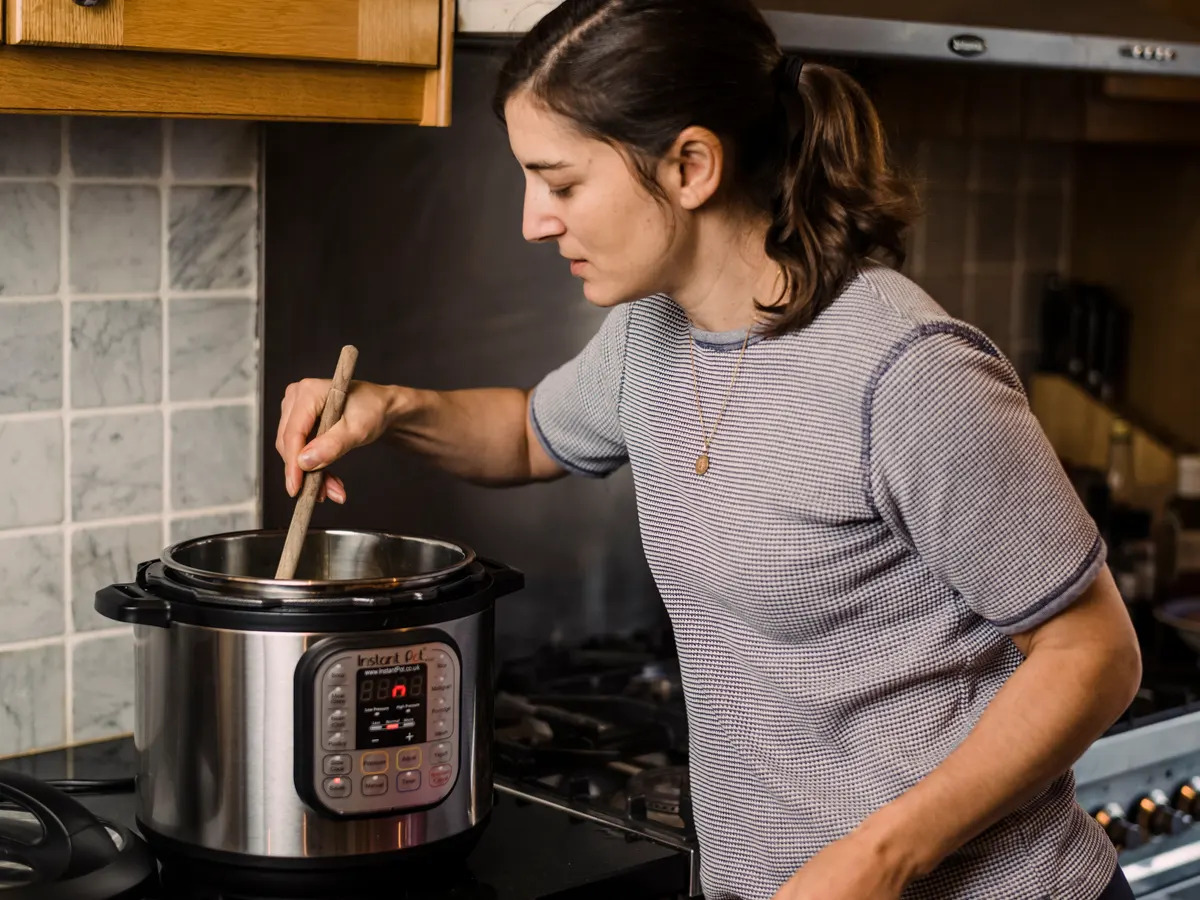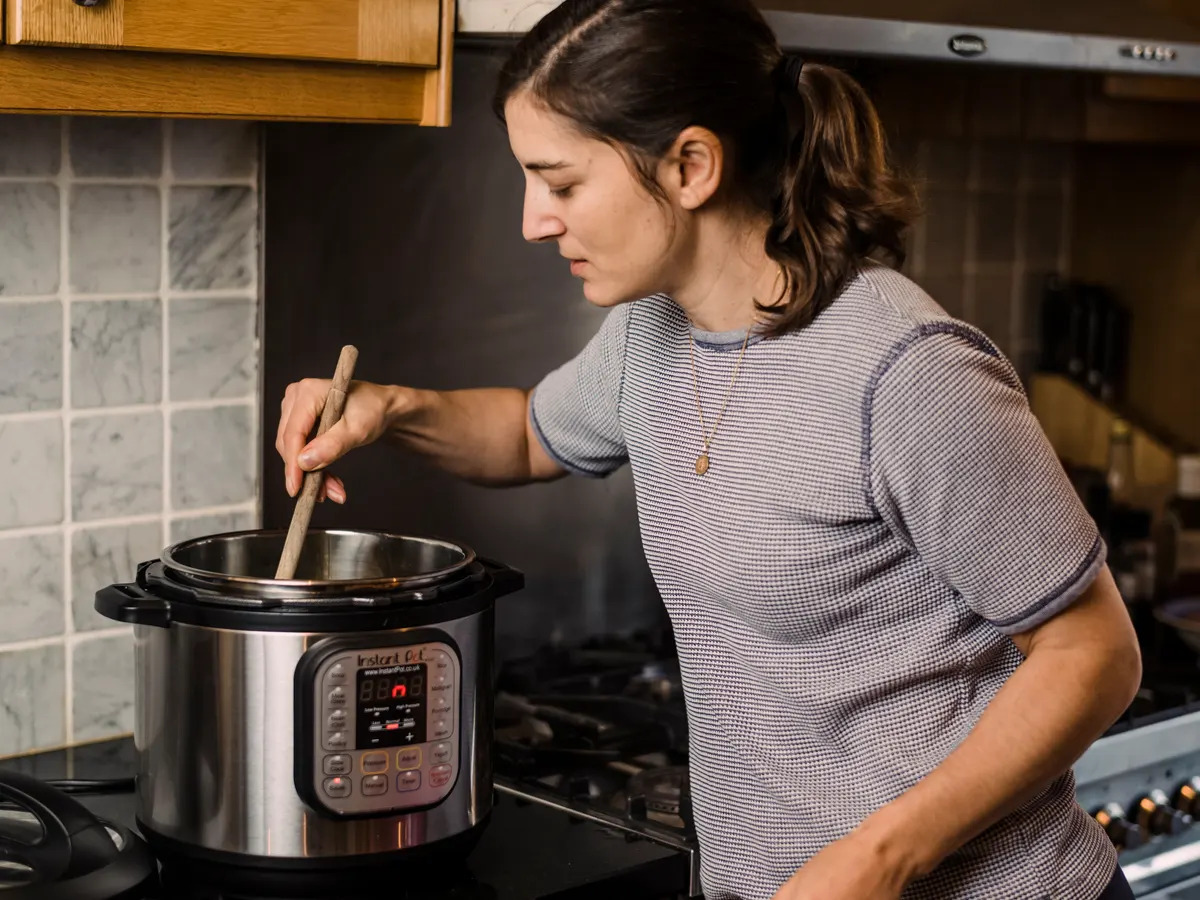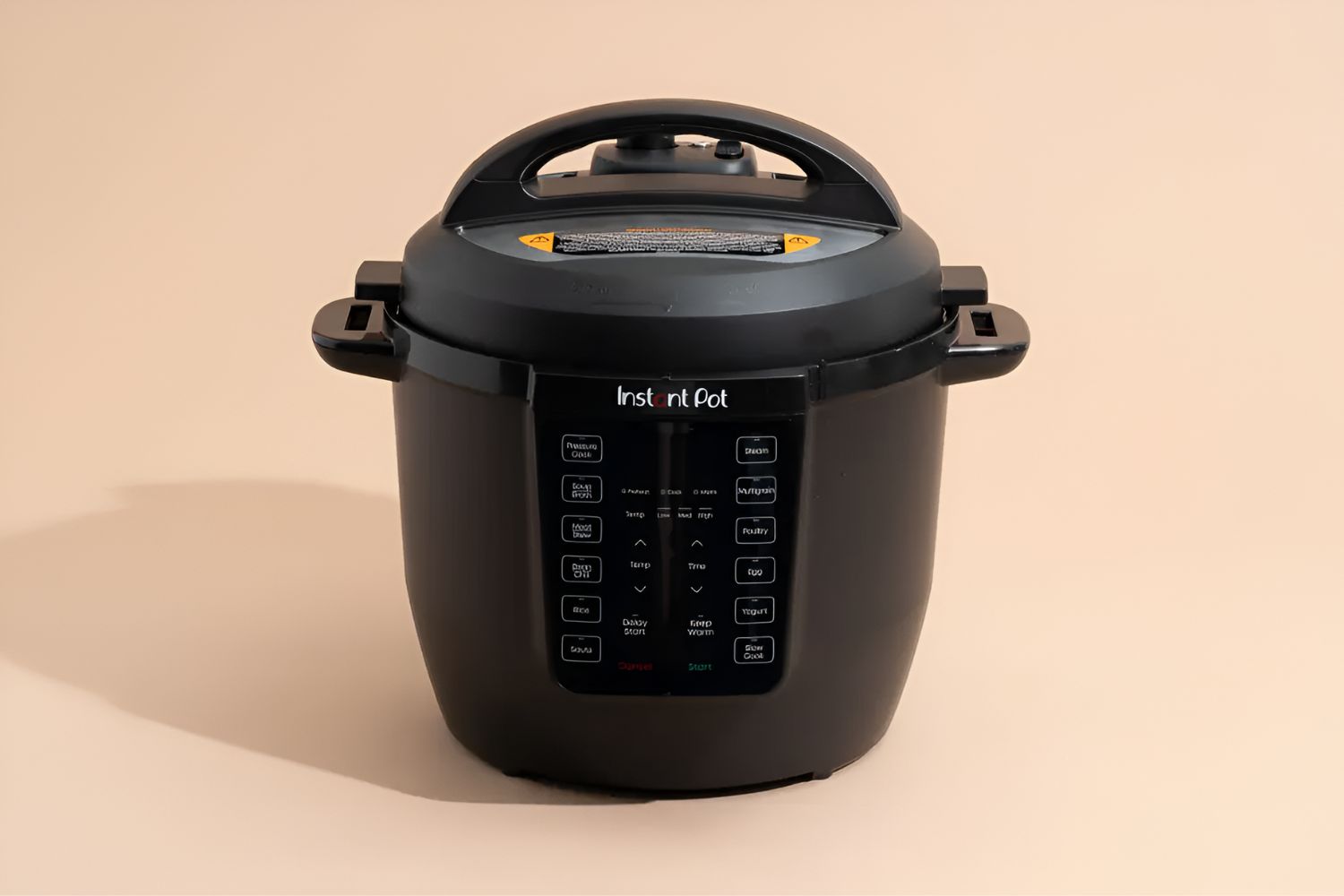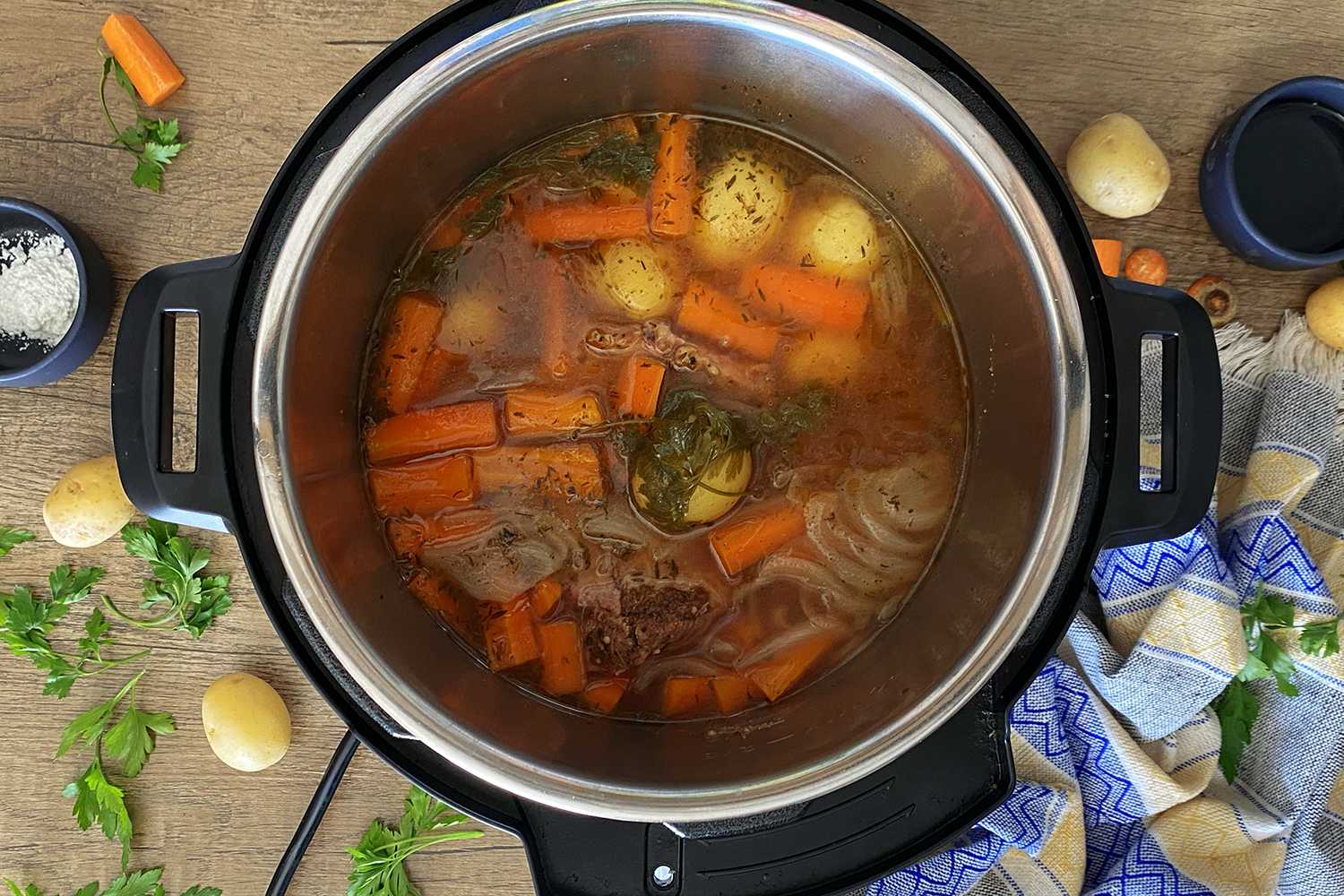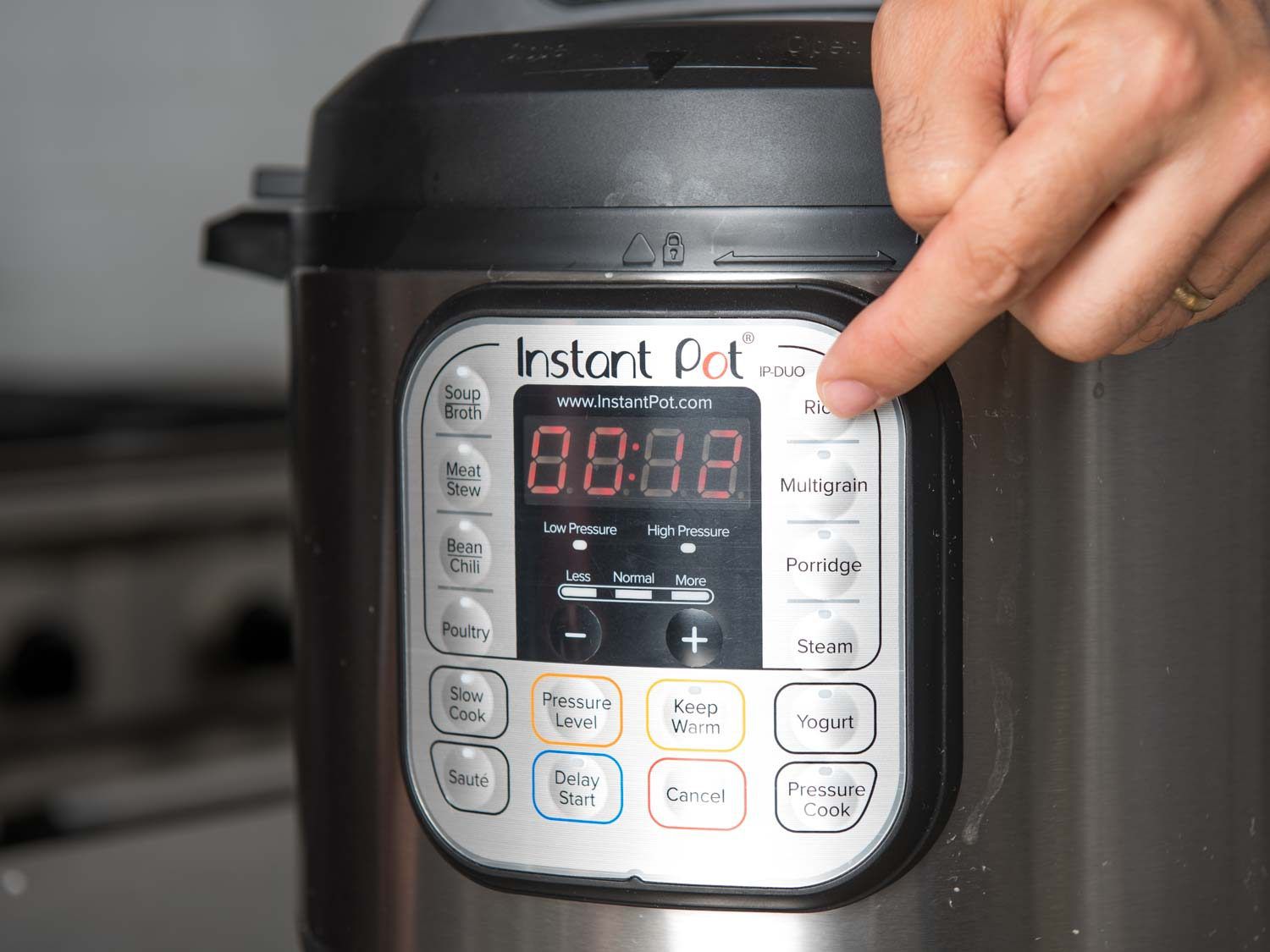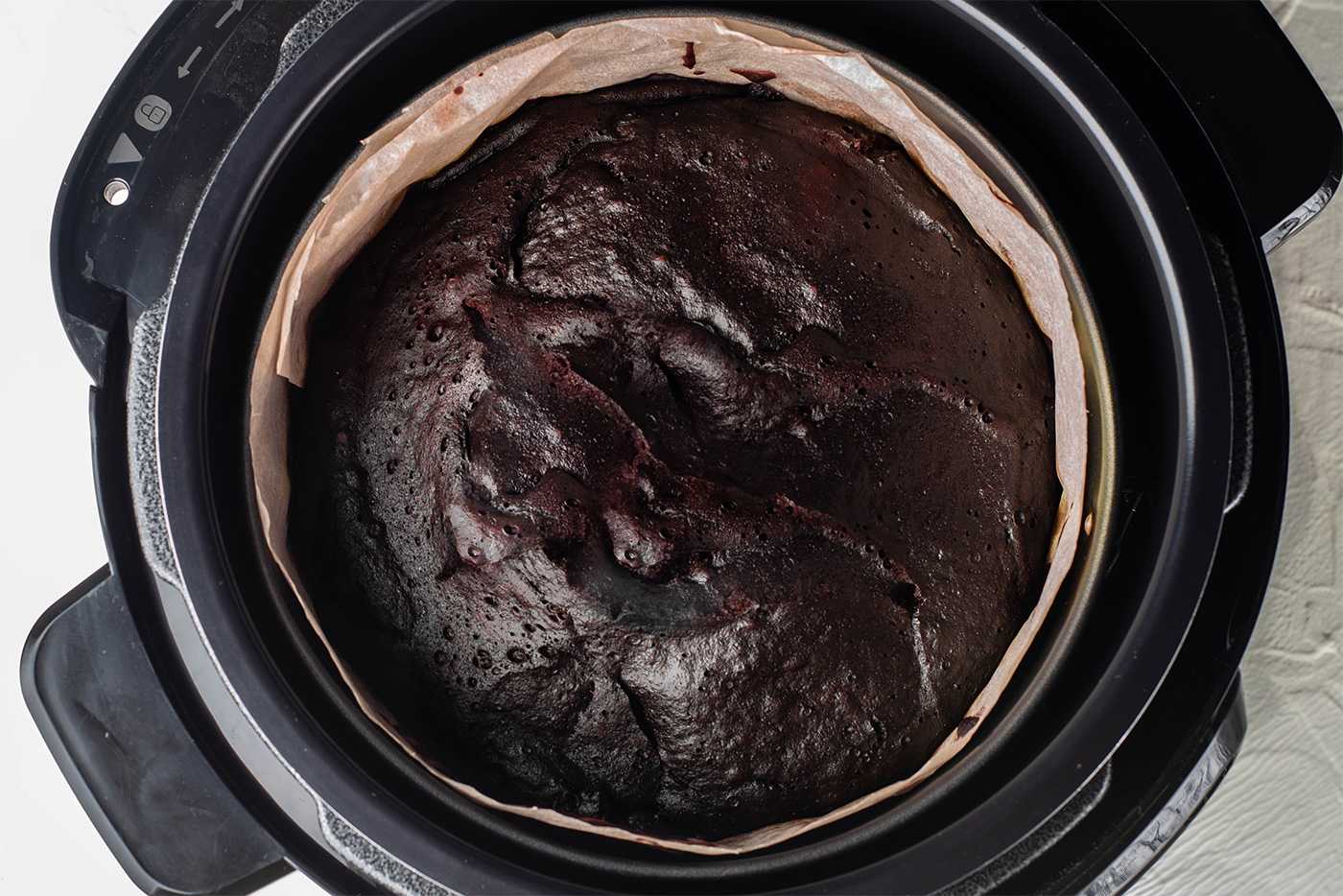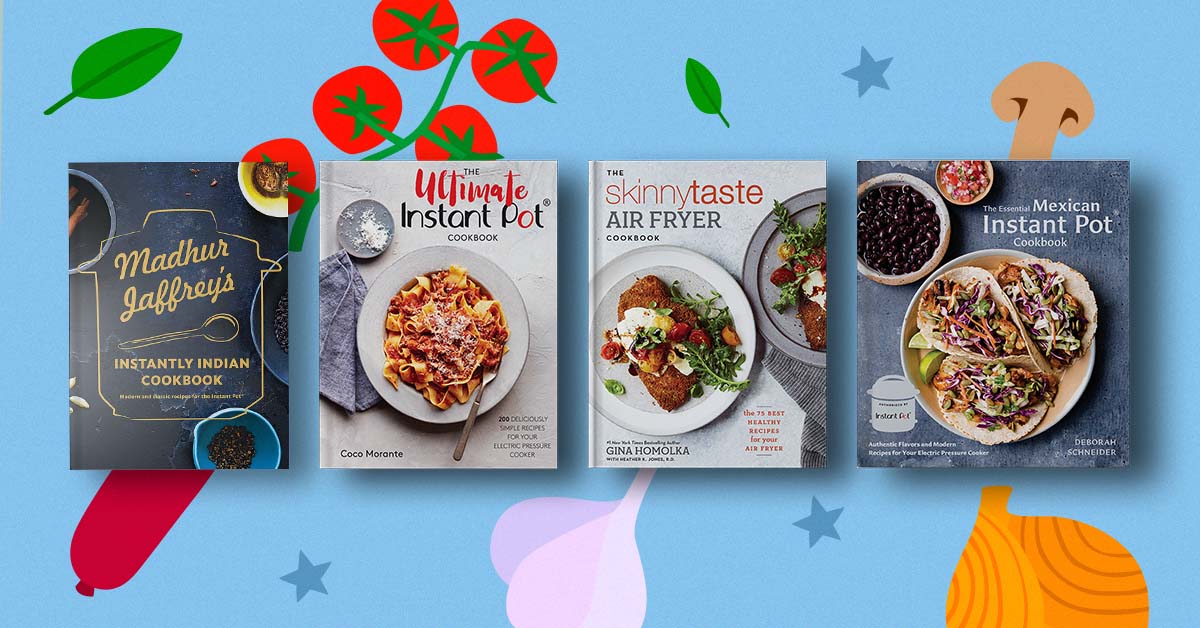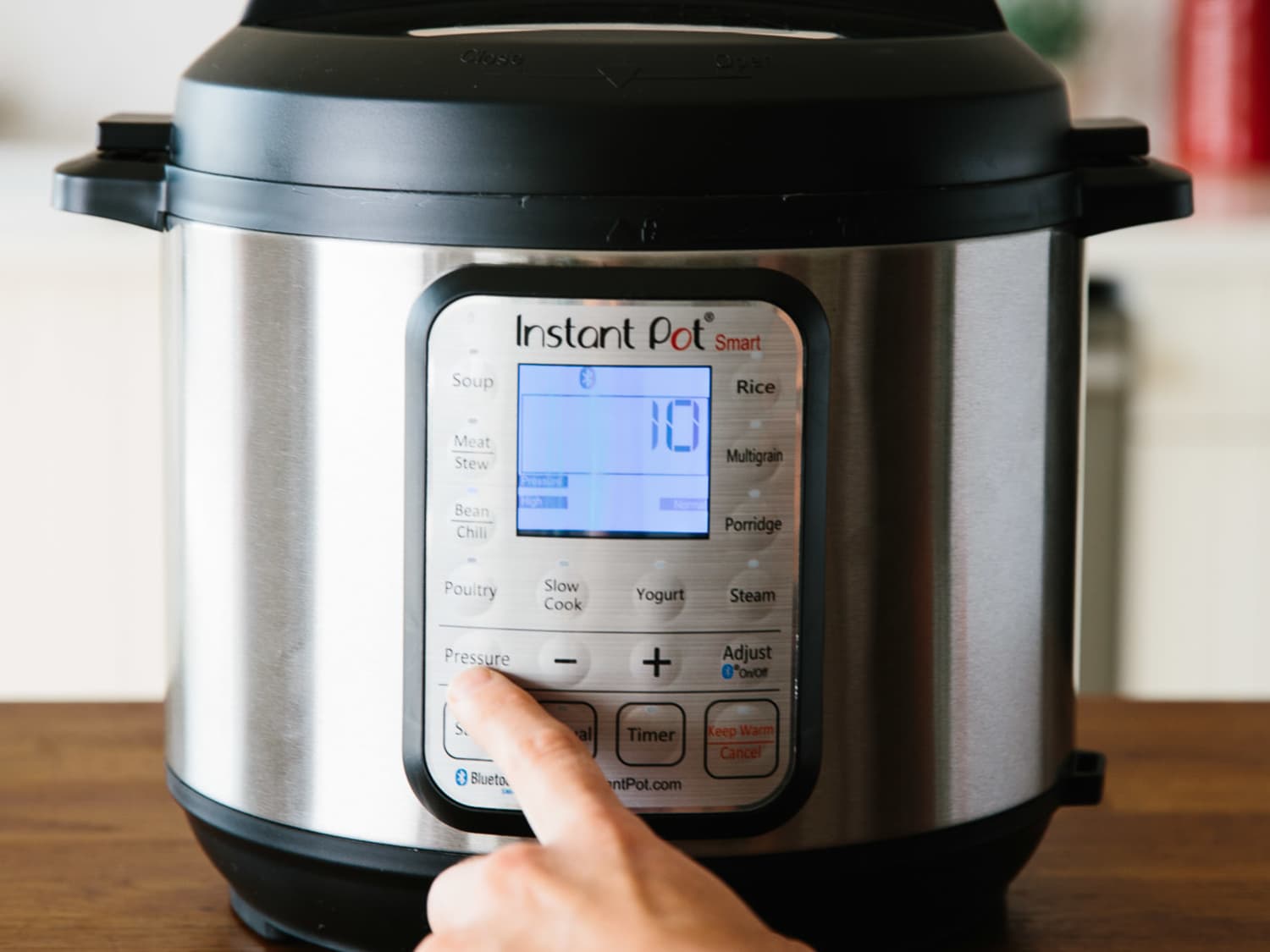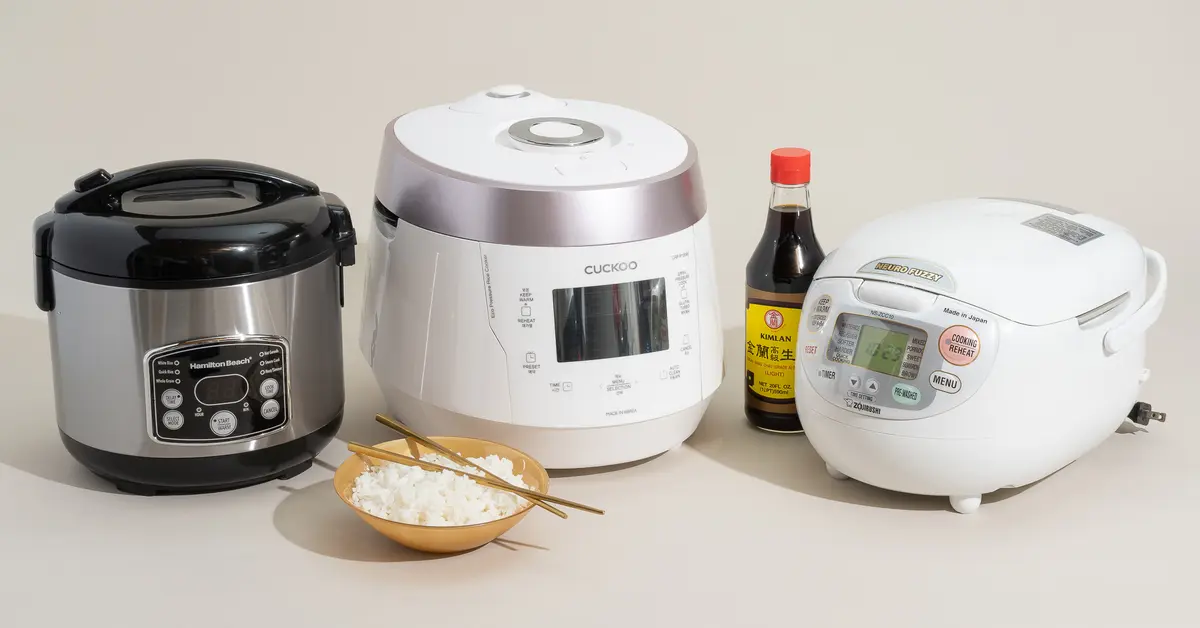Introduction
Electric pressure cookers have become increasingly popular in recent years, offering a convenient and efficient way to prepare meals. Whether you’re a seasoned cook or a beginner in the kitchen, using an electric pressure cooker can help save time and effort while still producing delicious and healthy dishes.
However, many home cooks find themselves faced with the task of converting their favorite recipes to suit the electric pressure cooker. While the adjustment may seem daunting at first, with a little understanding and practice, you’ll be able to successfully adapt your recipes for this versatile appliance.
In this article, we will explore the various aspects of converting recipes for electric pressure cookers. From adjusting cooking times to modifying ingredient quantities and adapting cooking methods, you’ll learn the essential techniques to ensure your recipes are perfectly suited for your electric pressure cooker.
It’s important to note that every recipe is different, and some adjustments may be required based on the specific ingredients and cooking method. However, by understanding the fundamental principles outlined in this guide, you’ll be equipped with the knowledge to confidently convert your recipes and create mouthwatering meals in your electric pressure cooker.
So whether you’re eager to experiment with new recipes or simply looking to make your old favorites more pressure cooker-friendly, read on to discover the tips and tricks that will help you master the art of converting recipes for your electric pressure cooker.
Understanding Electric Pressure Cookers
Before diving into the process of converting recipes, it’s important to have a solid understanding of how electric pressure cookers work. These appliances are designed to cook food quickly by using steam pressure to raise the boiling point of water.
Electric pressure cookers consist of a sealed pot with a locking lid and a pressure release valve. Inside the pot, there is a heating element that generates heat to create the steam pressure. The sealed environment prevents steam from escaping, allowing the pressure to build up and cook the food faster.
The advantage of using an electric pressure cooker is that it can significantly reduce cooking time compared to traditional cooking methods. It also helps to retain the nutrients and flavors of the ingredients, resulting in more tender and flavorful dishes.
Most electric pressure cookers come with pre-programmed settings for various types of foods, such as soup, meat, rice, and vegetables. These settings control the cooking time and pressure level automatically, simplifying the cooking process for beginners. However, it’s important to note that these settings are not always accurate for every recipe.
When converting a recipe for an electric pressure cooker, it’s crucial to understand the specific cooking requirements of your appliance. Familiarize yourself with the manufacturer’s instructions and guidelines to ensure you’re using the correct settings and following the recommended cooking times.
It’s also worth noting that different electric pressure cookers may have slight variations in cooking times and pressure levels. Therefore, it’s a good practice to start with shorter cooking times and gradually increase if needed. Regularly check the food for doneness and make adjustments as necessary to achieve the desired result.
Now that you have a better understanding of electric pressure cookers, let’s delve into the process of converting cooking times to ensure your recipes are properly adapted for this efficient cooking method.
Converting Cooking Times
One of the key factors to consider when converting recipes for an electric pressure cooker is adjusting the cooking time. Since pressure cooking allows for faster cooking, it’s important to find the right balance to ensure your dishes are cooked to perfection.
When converting a recipe, start by referencing the original cooking time stated in the recipe. As a general guideline, the cooking time in an electric pressure cooker is usually about 30-50% of the cooking time for traditional stovetop or oven cooking methods.
For example, if a recipe calls for 60 minutes of cooking time in the oven, you might start with around 30 minutes of cooking time in the electric pressure cooker. However, keep in mind that this is just a starting point, and further adjustments might be required based on the type of food and desired texture.
It’s important to note that not all ingredients require the same amount of cooking time. For instance, vegetables generally require shorter cooking times, while tougher cuts of meat may require longer cooking to achieve tenderness.
Additionally, consider the size and thickness of the ingredients. Larger pieces will take longer to cook, while smaller or thinly sliced ingredients may cook faster.
When converting the cooking time, it’s best to err on the side of caution and start with a shorter cooking time. You can always continue cooking under pressure if needed. Remember, it’s easier to add more cooking time than to salvage overcooked food.
Another factor that affects cooking time is the natural release or quick release method used at the end of cooking. Natural release refers to allowing the pressure to release naturally over a period of time. Quick release, on the other hand, involves manually releasing the pressure immediately after cooking.
Recipes that are more delicate or require additional cooking time can benefit from a natural release, allowing the food to continue cooking in the residual heat. Conversely, recipes that might become overcooked or require precise timing, such as seafood or crisp-tender vegetables, typically benefit from a quick release to halt the cooking process.
As you gain experience with your electric pressure cooker, you’ll become more adept at estimating the cooking times for different recipes. Remember, experimentation and adaptation are key when it comes to converting cooking times, so don’t be afraid to adjust and modify until you achieve the desired results.
Adjusting Ingredients
When adapting a recipe for an electric pressure cooker, it’s important to consider ingredient adjustments to ensure that your dish turns out perfectly. Here are some key tips for adjusting ingredients:
- Reduce the liquid: Since pressure cooking requires less liquid than traditional cooking methods, you may need to reduce the amount of liquid specified in the original recipe. As a general rule of thumb, you can decrease the liquid by about 1/2 to 2/3 of the original amount. However, do keep in mind that some ingredients, like rice and grains, require a specific ratio of liquid to properly cook.
- Trim excess fat: Fatty cuts of meat may release more liquid during the cooking process, which can affect the overall consistency of the dish. Trim any visible fat from the meat before cooking to reduce excess liquid.
- Consider ingredient density: Ingredients with different densities may require adjustment. For example, if you’re adding vegetables to a meat-based dish, you may need to cut the vegetables into smaller, more bite-sized pieces to ensure they cook evenly alongside the meat.
- Balance flavors: Since pressure cooking intensifies flavors, it’s important to adjust the seasonings accordingly. Taste the dish after cooking and add additional seasonings as needed to achieve the desired taste profile.
- Account for evaporation: Unlike traditional cooking methods, pressure cooking does not allow for evaporation. This means that liquids can become concentrated and flavors can intensify. Adjust sauces and seasonings accordingly, and add more liquid if necessary before cooking.
It’s important to note that not all recipes may require ingredient adjustments. Simple recipes with minimal ingredients, such as soups or stews, may require fewer modifications, while more complex recipes may need more careful adjustments.
Remember, the goal is to ensure that your dish cooks evenly and produces the desired flavors and textures. Be prepared to experiment and adjust ingredients based on the nature of the recipe and your personal preferences.
By making these ingredient adjustments, you can tailor your recipes to achieve the best possible results in your electric pressure cooker.
Adapting Liquid Levels
When converting recipes for an electric pressure cooker, it’s important to consider the liquid levels to ensure proper cooking and prevent any issues with the pressure build-up within the cooker. Here are some tips for adapting liquid levels:
- Reduce the liquid: The sealed environment of the pressure cooker traps and circulates the steam, which enhances the flavors and tenderness of the food. As a result, you will typically need less liquid compared to traditional cooking methods. A good rule of thumb is to reduce the liquid by about 1/2 to 2/3 of the original amount. However, keep in mind that some ingredients, like rice and grains, require a specific ratio of liquid to properly cook.
- Take into account ingredients with natural liquids: Certain ingredients, such as tomatoes, vegetables, or meat with high moisture content, release additional liquid during the cooking process. Consider these natural liquids when adjusting the overall liquid levels in your recipe. You may need to reduce the added liquid accordingly to avoid ending up with a dish that is too soupy.
- Account for evaporation: Unlike traditional cooking methods, pressure cooking does not allow for evaporation. This means that liquids can become concentrated and flavors can intensify. Adjust sauces and seasonings accordingly, and add more liquid if necessary before cooking.
- Use the minimum liquid requirement: Some electric pressure cookers have a minimum liquid requirement to ensure proper functioning and to generate steam. Check the manufacturer’s guidelines and make sure you meet the minimum liquid requirement in order to avoid any issues while cooking.
It’s important to strike a balance with the liquid levels to prevent the recipe from turning out too dry or too watery. Remember, you can always add more liquid after cooking if needed, but it’s difficult to fix a dish that has too much liquid.
Each recipe is unique, and it may require some trial and error to determine the right liquid levels for your specific dish. Start with a conservative amount of liquid, taste the dish after cooking, and adjust as necessary to achieve the desired consistency and flavors.
By adapting the liquid levels effectively, you can ensure that your recipes are perfectly suited for your electric pressure cooker, resulting in flavorful and well-cooked dishes.
Modifying Seasonings and Spices
When converting recipes for an electric pressure cooker, it’s important to consider the impact of pressure cooking on seasonings and spices. The high pressure and intense heat can intensify flavors, so it’s crucial to modify the seasonings and spices accordingly to achieve a well-balanced dish. Here are some tips for modifying seasonings and spices:
- Start with less: Since pressure cooking amplifies flavors, it’s best to start with a smaller amount of seasonings and spices than what the original recipe calls for. You can always taste and add more later if needed.
- Layer flavors: Building and layering flavors is key in pressure cooking. Start by sautéing or browning aromatics, such as onions, garlic, or herbs, before adding other ingredients. This will help release and enhance the flavors throughout the dish.
- Consider texture changes: Keep in mind that certain spices, such as chili powder or cayenne pepper, may become more intense during pressure cooking. If you’re sensitive to spiciness, consider reducing the amount or using milder spices to avoid overpowering the dish.
- Adjust acidity: Acidity can be enhanced during pressure cooking. If your recipe includes ingredients with high acidity, such as tomatoes or vinegar, you may need to reduce the amount to balance the flavors.
- Experiment with timing: Sometimes, adding certain delicate herbs or spices, such as fresh herbs, towards the end of the cooking process can help retain their aromas and flavors. Experiment with the timing to find the perfect balance for your dish.
It’s important to taste and adjust the seasonings after the dish is cooked. Keep in mind that flavors will continue to meld and develop as the dish sits, so it’s best to let it rest for a few minutes before making any final adjustments.
Don’t be afraid to get creative and experiment with different combinations of seasonings and spices. Pressure cooking offers a great opportunity to infuse vibrant flavors and aromatic profiles into your dishes. Enjoy the process of discovering delicious new variations and tailor them to suit your personal preferences.
By modifying the seasonings and spices, you can create well-seasoned and flavorful dishes in your electric pressure cooker.
Changing Cooking Methods
Converting recipes for an electric pressure cooker often involves adjusting the cooking methods to ensure optimal results. While some dishes can be prepared using the default pressure cooking setting, others may benefit from alternative techniques to achieve the desired texture and flavors. Here are some considerations for changing cooking methods:
- Sautéing or browning: Many electric pressure cookers have a sauté function, which allows you to brown ingredients before pressure cooking. Browning meat or vegetables can add depth of flavor and enhance the overall taste of the dish. Consider using this function for recipes that require a caramelized or crispy exterior.
- Deglazing: After sautéing ingredients, deglazing the pot with liquid, such as broth or wine, can help loosen any browned bits stuck to the bottom. This step not only adds flavor but also prevents the pot from displaying a “burn” error message during pressure cooking.
- Steaming: Electric pressure cookers often come with a steamer basket or rack. This allows you to steam vegetables, fish, or even desserts. Steaming is a healthy cooking method that retains the nutrients and natural flavors of the ingredients while providing a moist and tender outcome.
- Slow cooking: Some electric pressure cookers have a slow cooker function, allowing you to cook dishes at a lower temperature over a longer period. This setting is particularly useful for recipes that benefit from a slow and gentle cooking process, such as stews or braised meats.
- Pressure cooking with a trivet: Elevating certain ingredients on a trivet can prevent them from getting overcooked or becoming too mushy. This technique is useful when cooking delicate items that benefit from light and indirect pressure, such as eggs or flaky fish fillets.
It’s important to consult your electric pressure cooker’s manual to understand the specific settings and functions available. Each appliance may have different capabilities, so familiarize yourself with the options and experiment to find the most suitable cooking methods for your recipes.
Furthermore, remember to consider the order in which you add the ingredients. Dense ingredients, such as root vegetables or meat, may require longer cooking times and should be added first, while more delicate ingredients, like herbs or quick-cooking vegetables, may be added later to prevent overcooking.
With a bit of creativity and adaptation, you can make the most of your electric pressure cooker’s versatile cooking methods to create a wide range of delicious dishes.
Testing and Adjusting Recipes
Converting recipes for an electric pressure cooker requires a bit of experimentation and fine-tuning to achieve the desired results. Here are some important steps to take when testing and adjusting recipes:
- Start with a small batch: When trying out a new recipe or converting an existing one, it’s best to start with a smaller batch. This allows you to make adjustments without the risk of wasting a large quantity of ingredients.
- Follow the recipe closely: Begin by following the recipe as closely as possible, making note of any modifications or adjustments you have made specifically for the pressure cooker. This will serve as your baseline for future adjustments.
- Document changes and observations: Take notes on the changes you make, including adjustments to cooking times, liquid levels, and seasonings. Also, observe the texture and taste of the final dish to determine if further modifications are necessary.
- Taste and adjust: After cooking, taste the dish and assess its flavors, textures, and consistency. If the dish requires more seasoning, adjust accordingly. If the texture is not as desired, take note of the changes needed for the next attempt.
- Consider feedback and preferences: Take into account the feedback and preferences of those who taste the dish. Their input can help you better understand how to adjust flavors and textures to suit different palates.
- Repeat and refine: Use the feedback and observations from your initial test to make further adjustments in subsequent attempts. Each iteration brings you closer to achieving the perfect recipe that suits your tastes and works well in the electric pressure cooker.
It’s important to recognize that recipe conversion for electric pressure cookers can be a trial-and-error process. Different brands and models of pressure cookers may yield slightly different results, so don’t be discouraged if your first attempts aren’t perfect.
Remember to be patient, take notes, and embrace the learning experience. With each adjustment and refinement, you’ll gain a better understanding of how to adapt recipes to your electric pressure cooker’s specific characteristics.
Enjoy the journey of testing and adjusting recipes, and celebrate your achievements as you come closer to perfecting your favorite dishes in the electric pressure cooker.







